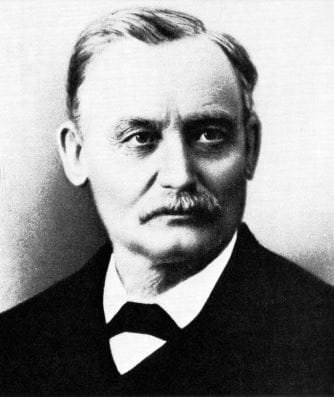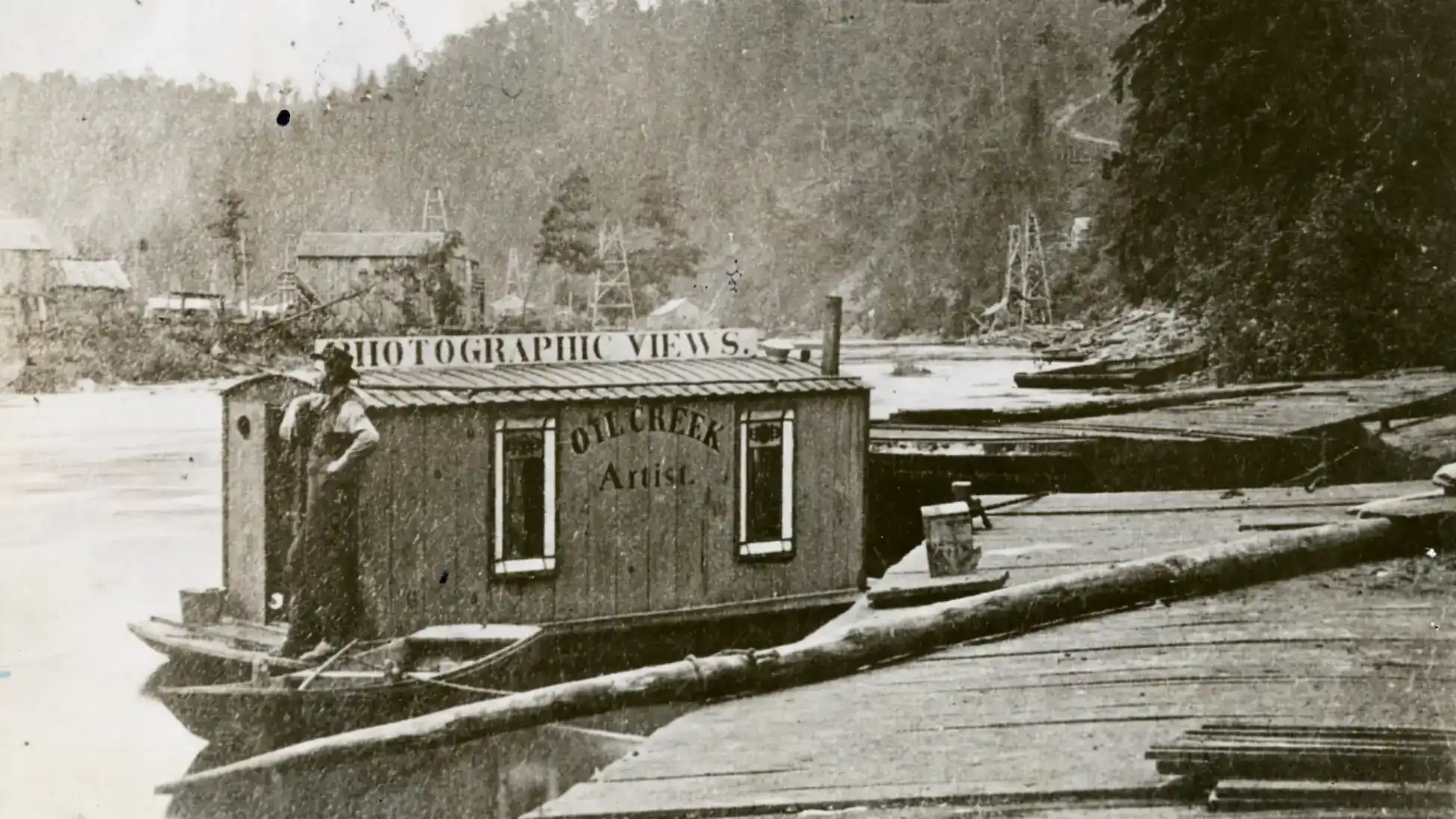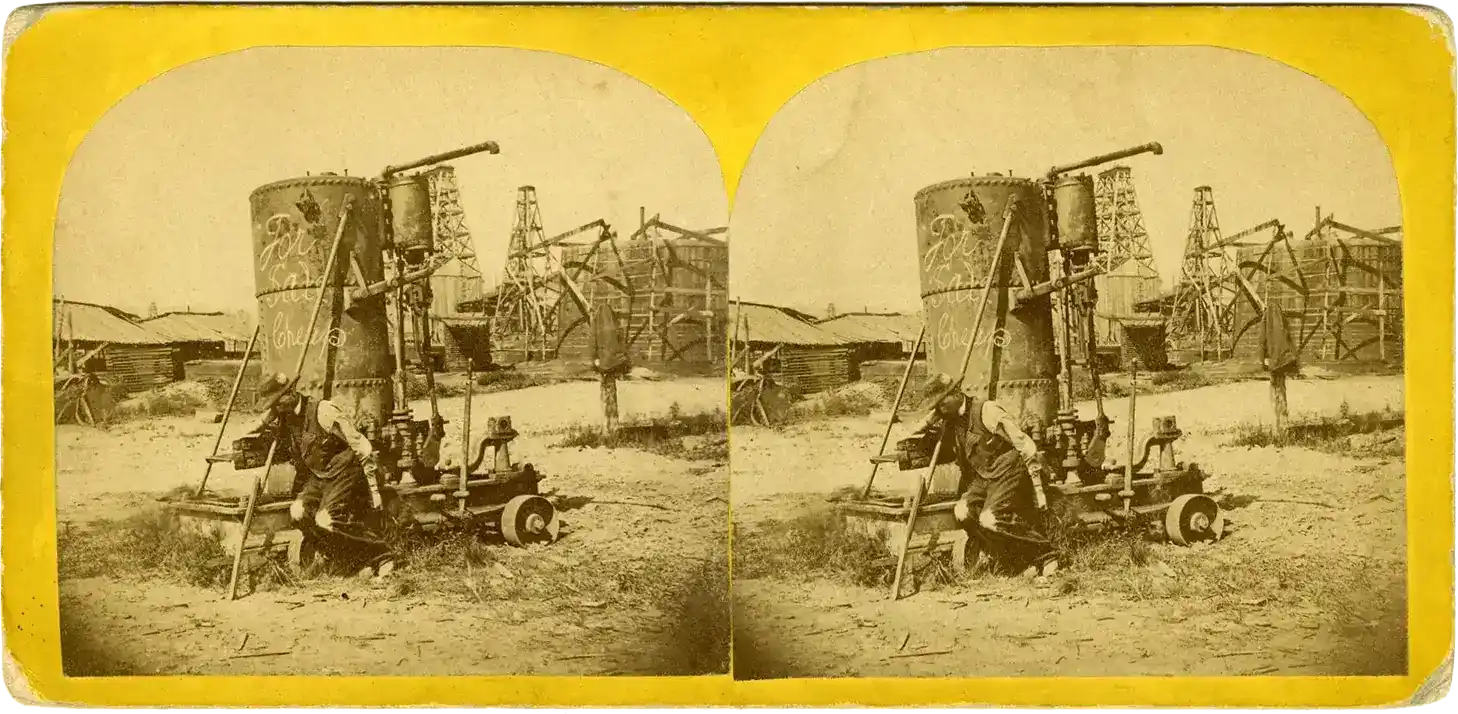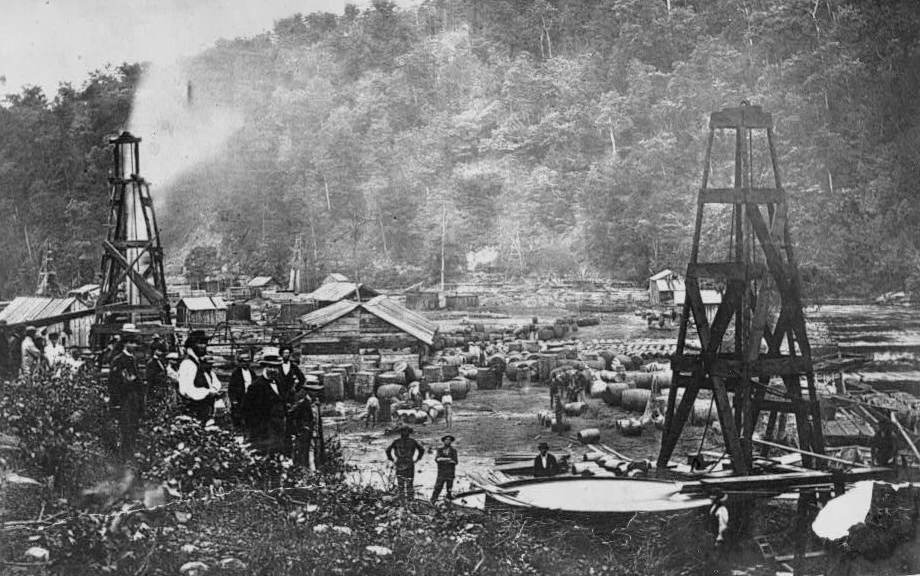“Mammoth Photographs and Stereoscopic Views: Appropriate Holiday Gifts”
Titusville Morning Herald, December 22, 1866

A few years ago it was thought that the photograph could never supersede the painting by hand of life-sized portraits, but scientific operators turned their attention to the subject and succeeded in producing, by means of giant cameras, portraits as large as life. One of these splendid instruments, and the largest ever introduced here, has just been received by J. A. Mather. It will be mounted today and ready for operation.
The fidelity of photograph likenesses is, of course, unequalled by any production of the most accomplished artist on canvas. Hence, the instrumental views have almost entirely superseded those of the portrait and landscape painter. Photographs colored in oil are now rendered with such perfection as to challenge the most critical tests. There is no more appropriate or valuable gift for Christmas or New Year than one of these elegant productions.

We examined yesterday Mr. Mather’s Stereoscopic Views of the Oil Region. They have been produced at an enormous outlay of time, labor and money – Mr. Mather having expended many consecutive months in obtaining them. They include over 600 different views, the artist having visited every good producing locality in the oil region.
All of the old wells are taken, including the Noble and Empire, in the noontide of their glory, when they poured forth thousands of barrels of oil per day. Pithole Creek, Dingley and Dennis Rune, Pioneer, Bennehoff, Hickory, Bull Run, and all the celebrated farms. Views of Titusville and Petroleum Centre, Tidioute, Pleasantville, Boyd Farm, Pithole City, Shaffer and Miller Farm, etc., etc., are all pictures to the life, and fitted to stereoscopic cards.
If you have any friend “in America” who wants to know how things look in the wilderness, just purchase a dozen well-selected views and a small stereoscope and send by express for Christmas or New Year. Or if you wish to amuse your children at the family fireside, give them the benefit of visiting these various scenes by proxy, and reveling in the luxury of a bird’s-eye investigation of these attractive realities.

They are not fancy sketches. Mr. Mather has been in Titusville seven years, and being constantly engaged in his profession, has saved many scenes from oblivion that were really worth preserving, and are prized by the pioneers of Oil Creek.
The artist’s first adventure was in a little boat, suitable for conveying his apparatus and protecting himself from the inclemency of the weather. He weighed anchor at Titusville and found very smooth sailing , and filled his portfolio with splendid views along the creek. But one night a furious storm came on, “the breaking waves dashed high,” the bonnie boat and her precious contents were capsized by the angry breakers, and the artist alone was left to tell the story.
Not a whit discouraged, Mr. Mather returned to Titusville, built himself a Great Eastern, purchased new instruments and started on a six months voyage. If anybody wants to know the results of that expedition let them visit his photograph gallery on Spring Street, and examine his stock. We have not space to describe it in detail, but we may express the opinion that every visitor will be agreeably surprised.
> To learn more about John A. Mather, check out the article “Oildom’s Photographic Historian” from the January 1972 issue of Western Pennsylvania History.
